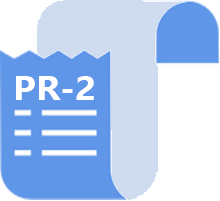E/M Services Denied for Insufficient Documentation

Increasingly, claims administrators are no longer downcoding evaluation and management (E/M) services. Instead, many claims administrators are denying charges for E/M services due to insufficient documentation.
Even when E/M services are indicated on the Primary Treating Physician’s Progress Report (PR-2) form, providers who do not use the allotted space on the PR-2 to fully substantiate the level of E/M service may find the charge denied. Some claims administrators are paying only for the PR-2 report itself — meaning providers receive just $12.46 for each visit.
What’s more, Maximus Federal Services, the private entity that conducts Independent Bill Review (IBR) on behalf of the State of California, is upholding these E/M charge denials. Without the extensive documentation claims administrators demand, providers are likely to lose such appeals.
Establishing Level of E/M Service
To ensure reimbursement for E/M services, the first step is to accurately establish the level of E/M service rendered. That in itself can be tricky business, as the guidelines for determining the correct level are notoriously complex.
Providers must follow either the 1995 or 1997 Center for Medicare and Medicaid Services (CMS) Documentation Guidelines for Evaluation and Management Services, identifying the level of service according to seven components:
- History
- Examination
- Medical Decision Making
- Counseling
- Coordination of Care
- Nature of Presenting Problem
- Time
Each of the seven components features its own unique component levels of service. Taken in conjunction, these component levels of service establish the overall level of service for a given E/M procedure. With the level of service established, providers select the appropriate procedure code.
If it seems convoluted, that’s because it is.
Very specific, extremely complex requirements apply when determining the level of service according to these seven components. See our guide to E/M services billing for a detailed explanation on exactly how to assess a given E/M service for billing purposes, and download our E/M services checklist.
Documenting E/M Services
It’s not enough to identify the correct level of service and apply the correct billing code. All too often, claims administrators deny E/M service charges due to a lack of specificity in the provider’s documentation.
For example, consider the “Examination” component.
It is insufficient to simply note on the PR-2 report that the provider conducted an examination. The provider must establish which level of examination (from “problem focused” to “comprehensive”) applies with specific details. If the PR-2 does not substantiate the level reflected by the billing code, denial is likely.
The CMS Documentation Guidelines offer several specific rules regarding details the provider must include in their documentation, noted in the Guidelines with the symbol ‘DG.’ For example, regarding the examination component:
DG: Specific abnormal and relevant negative findings of the examination of the affected or symptomatic body area(s) or organ system(s) should be documented. A notation of “abnormal” without elaboration is insufficient.
The Documentation Guidelines offer similar rules for all seven components. Providers must align their PR-2 reports with these guidelines for all E/M codes and modifiers to prevent the claims administrator from denying payment.
When in doubt, refer to the Guidelines, and be more specific as necessary.
We understand that such extensive documentation is time-consuming and burdensome. Sadly, such onerous requirements are typical of workers’ compensation — hence our mission to make it easier in any way possible.
We can’t make workers’ comp rules less complicated. We can make them easier to navigate. Our Billing Software makes authorization, billing, and appeals less of a headache for providers. Request a free demonstration, and see how.
REQUEST DEMO
DaisyBill provides content as an insightful service to its readers and clients. It does not offer legal advice and cannot guarantee the accuracy or suitability of its content for a particular purpose.



